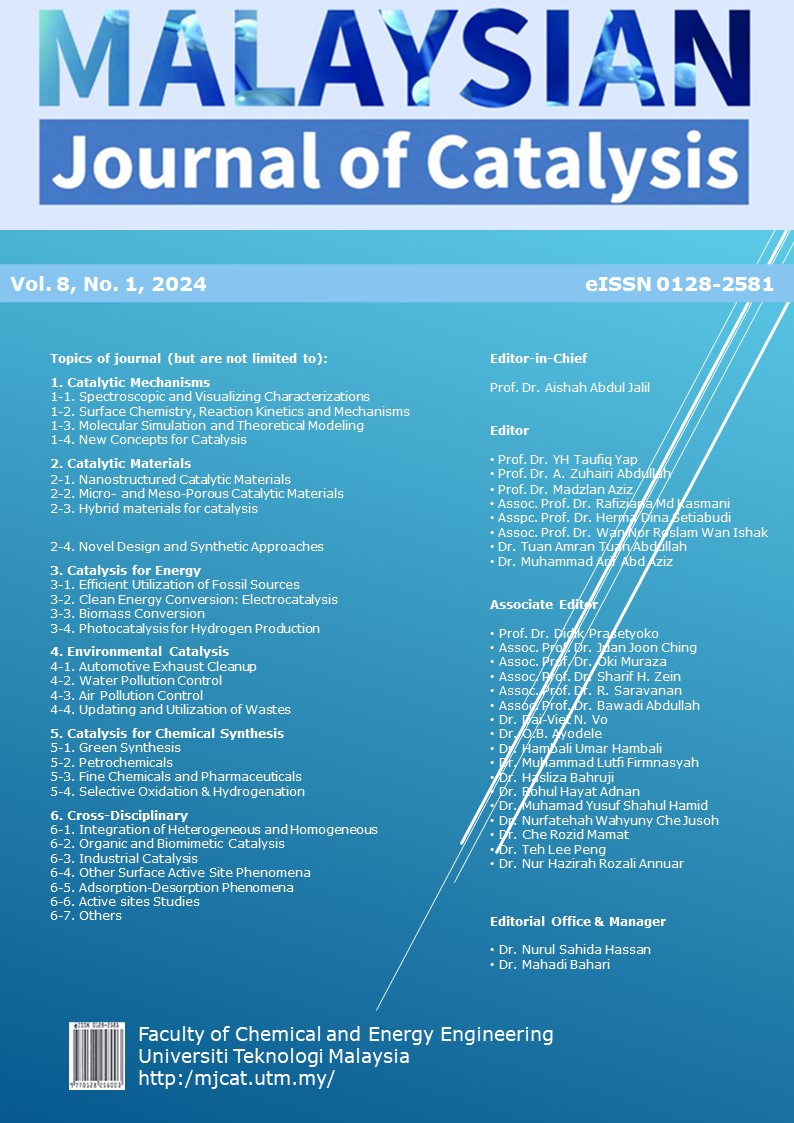Evaluation of the Glass Transition Temperature and Intermolecular Interaction of Poly(ethylene oxide) with Addition of Lithium Perchlorate or/and Titanium Dioxide
DOI:
https://doi.org/10.11113/mjcat.v8n1.184Keywords:
intermolecular interaction, glass transition temperature (Tg), poly(ethylene oxide), lithium perchlorate, titanium dioxideAbstract
The high crystallinity of poly (ethylene oxide) (PEO) has urged the need for adding salt or nanofiller. The effect of the glass transition temperature (Tg) and intermolecular interaction of PEO upon the addition of salt or nanofiller become a debatable topic due to the lacking of the understanding of the role of salt or nanofiller in PEO. Hence, the evaluation of the Tg and intermolecular interaction of PEO with addition of lithium perchlorate (LiClO4) salt or/and titanium dioxide (TiO2) nanofiller are presented and discussed. The solid polymer electrolytes with addition of nanofiller are prepared by solution casting technique. The optimum composition of PEO and LiClO4 salt is used as host matrix and TiO2 as nanofiller. The Tg and intermolecular interaction of the polymer-based electrolytes have been studied by differential scanning calorimetry (DSC) and Fourier transform infrared (FTIR) spectroscopy. PEO-LiClO4 serves as the classical model of polymer-salt systems with good polymer-salt molecular interaction at low salt concentration (WS ≤ 0.107) whereas TiO2 without any surface treatment when added to PEO, serves as a classical model of polymer-nanofiller systems with weak polymer-nanofiller molecular interaction. Results have shown that LiClO4 salt gives notable effect on the Tg and intermolecular interaction of PEO. Whereas, TiO2 do not provide a substantial effect on the Tg and intermolecular interaction of PEO-based polymer electrolytes. This work provides a better understanding and knowledge of the effect of addition of salt or/and nanofiller in the Tg and intermolecular interaction of the PEO systems.

Downloads
Published
How to Cite
Issue
Section
License

This work is licensed under a Creative Commons Attribution-NonCommercial 4.0 International License.
The Malaysian Journal of Catalysis publishes open access articles under the terms of the Creative Commons Attribution (CC BY) License which permits use, distribution and reproduction in any medium, provided the original work is properly cited.Â
The Department of Chemistry, Faculty of Science, UTM retains the Copyright on any research article published by Malaysian Journal of Catalysis.
Authors grant Malaysian Journal of Catalysis a license to publish the article and identify itself as the original publisher.















